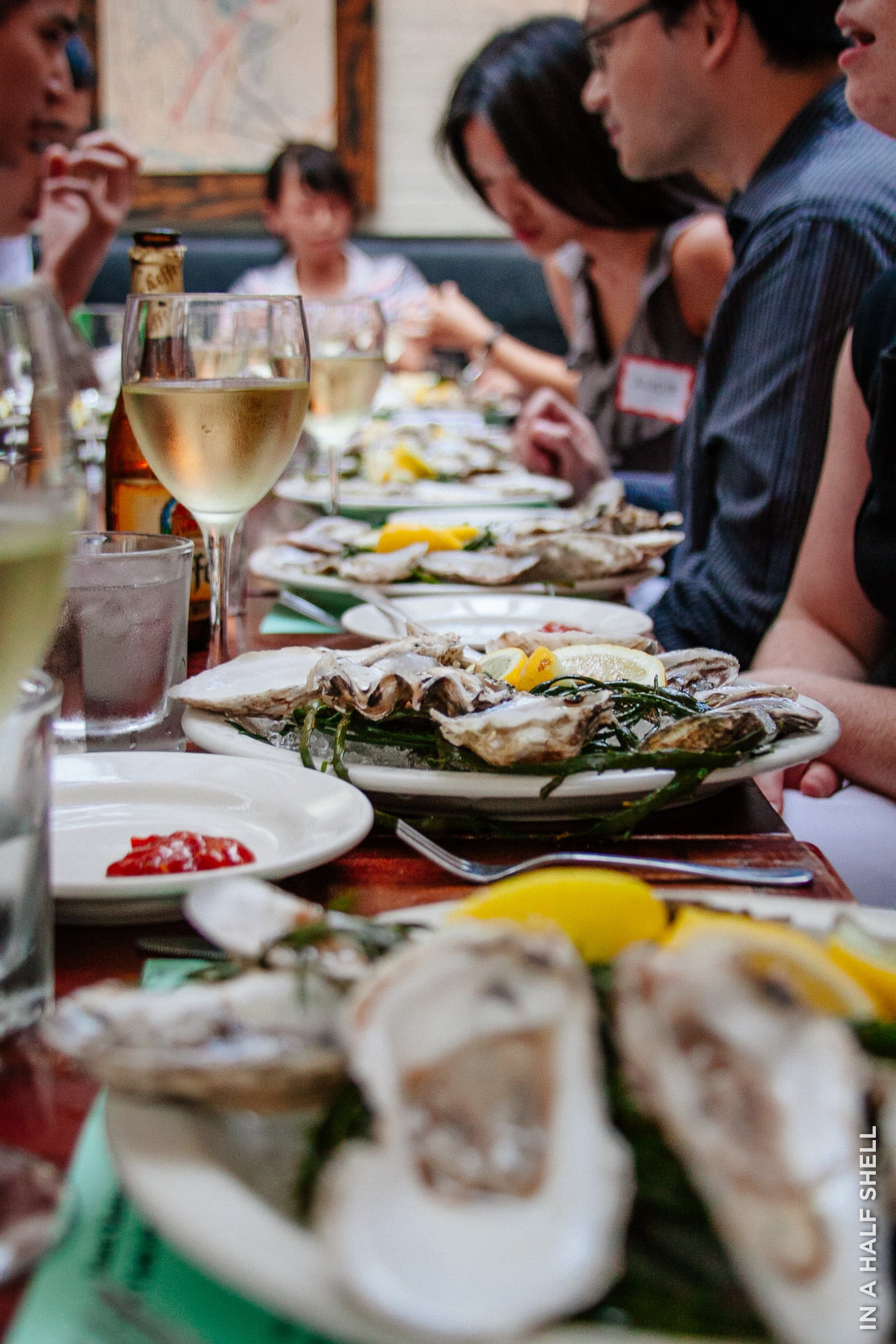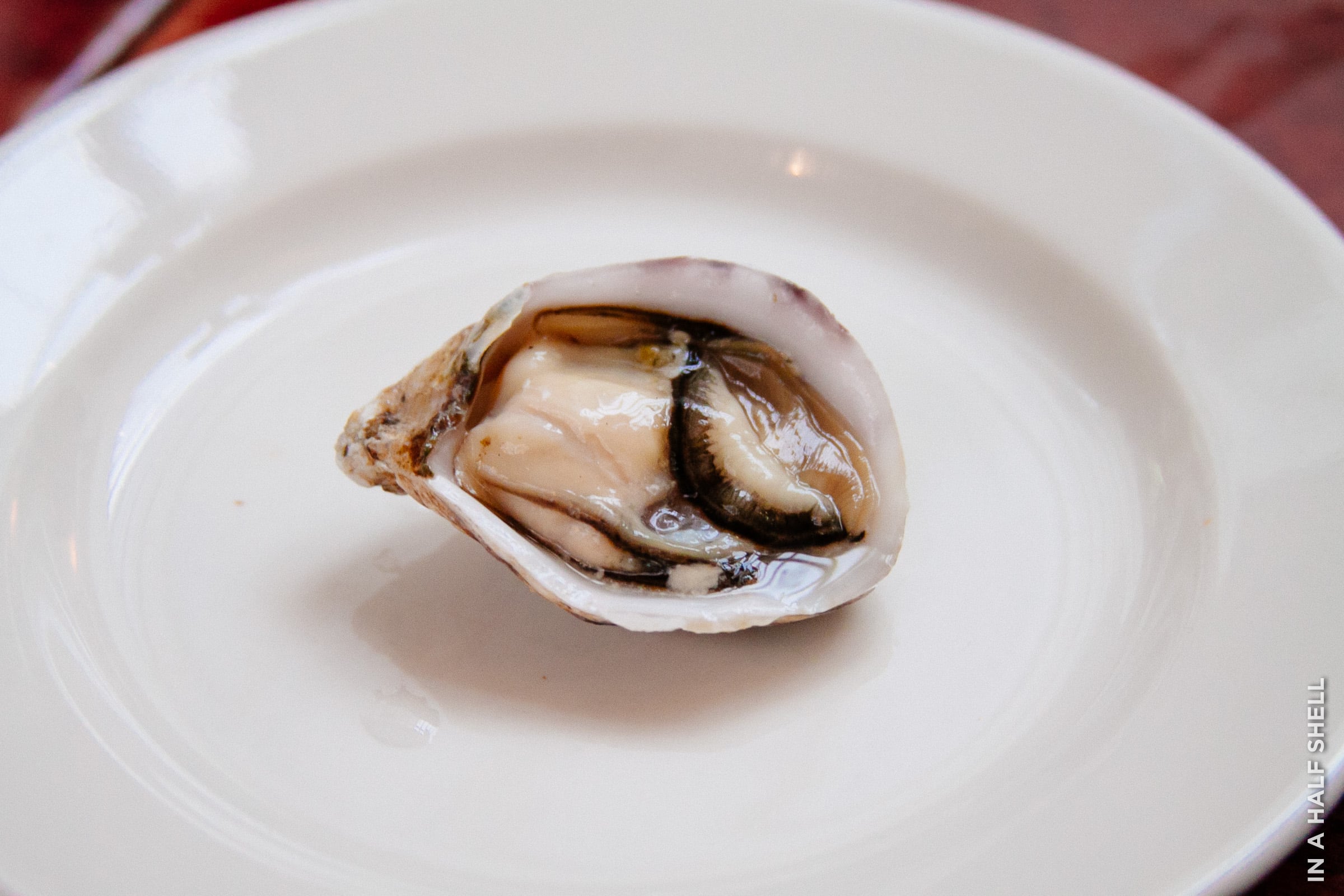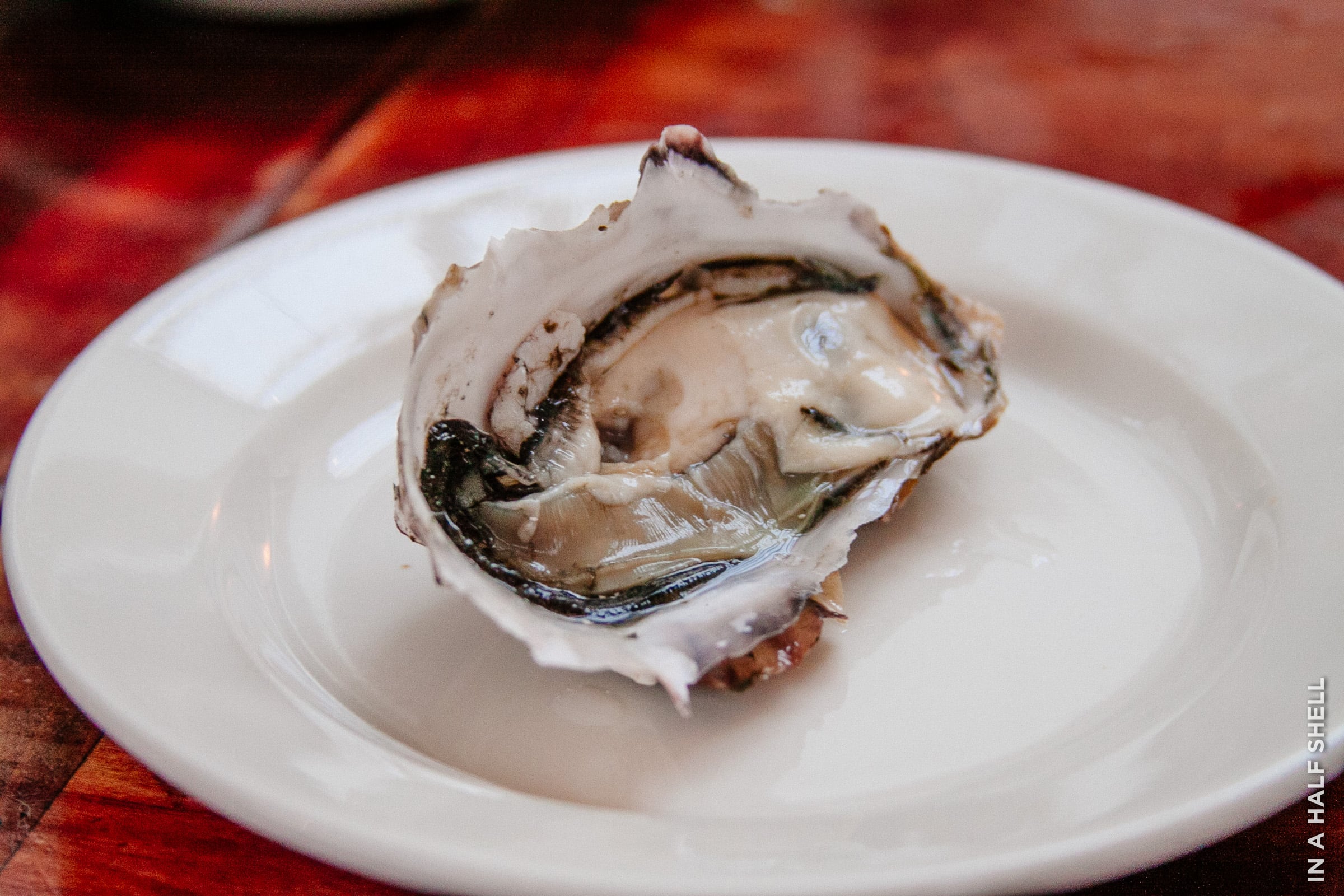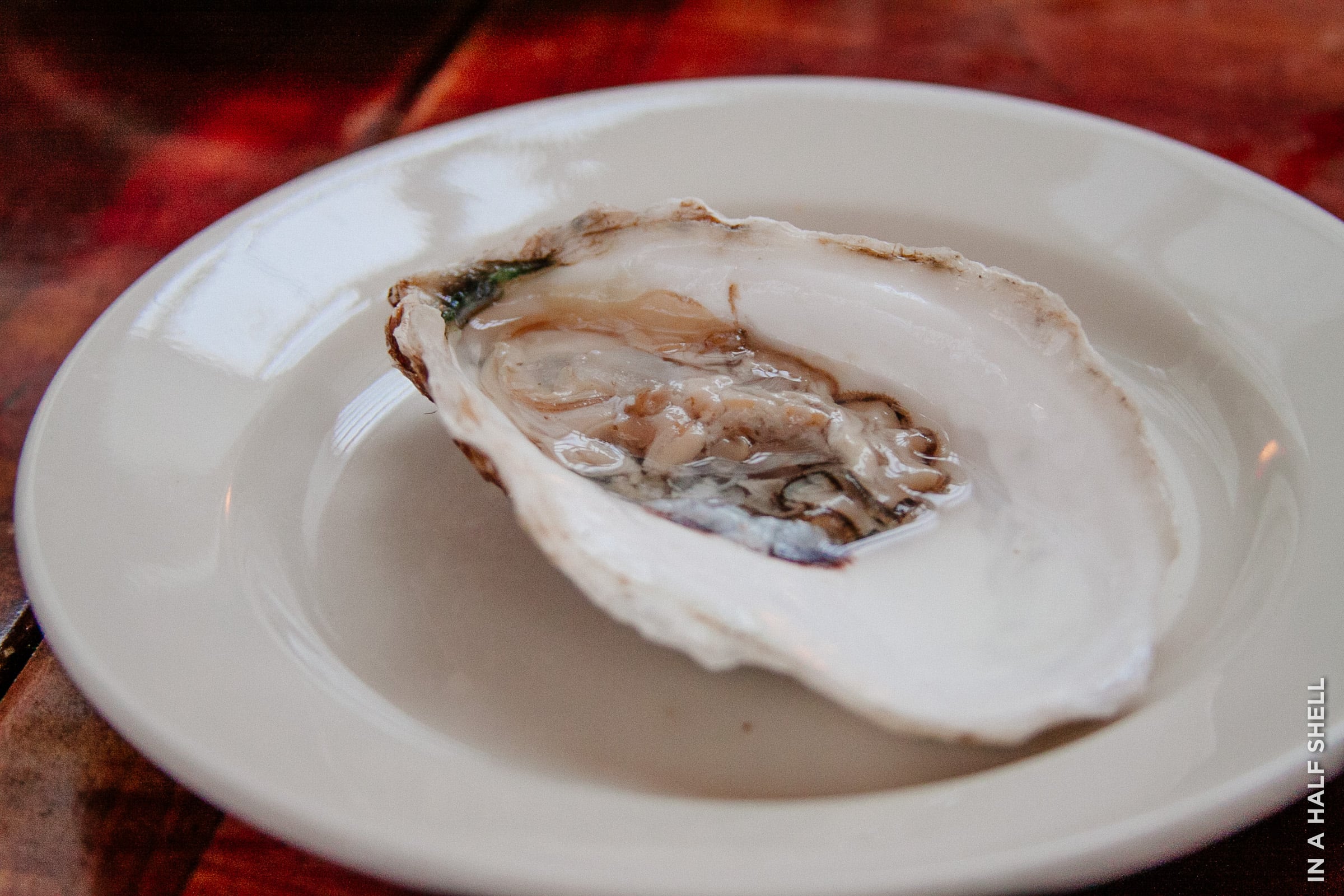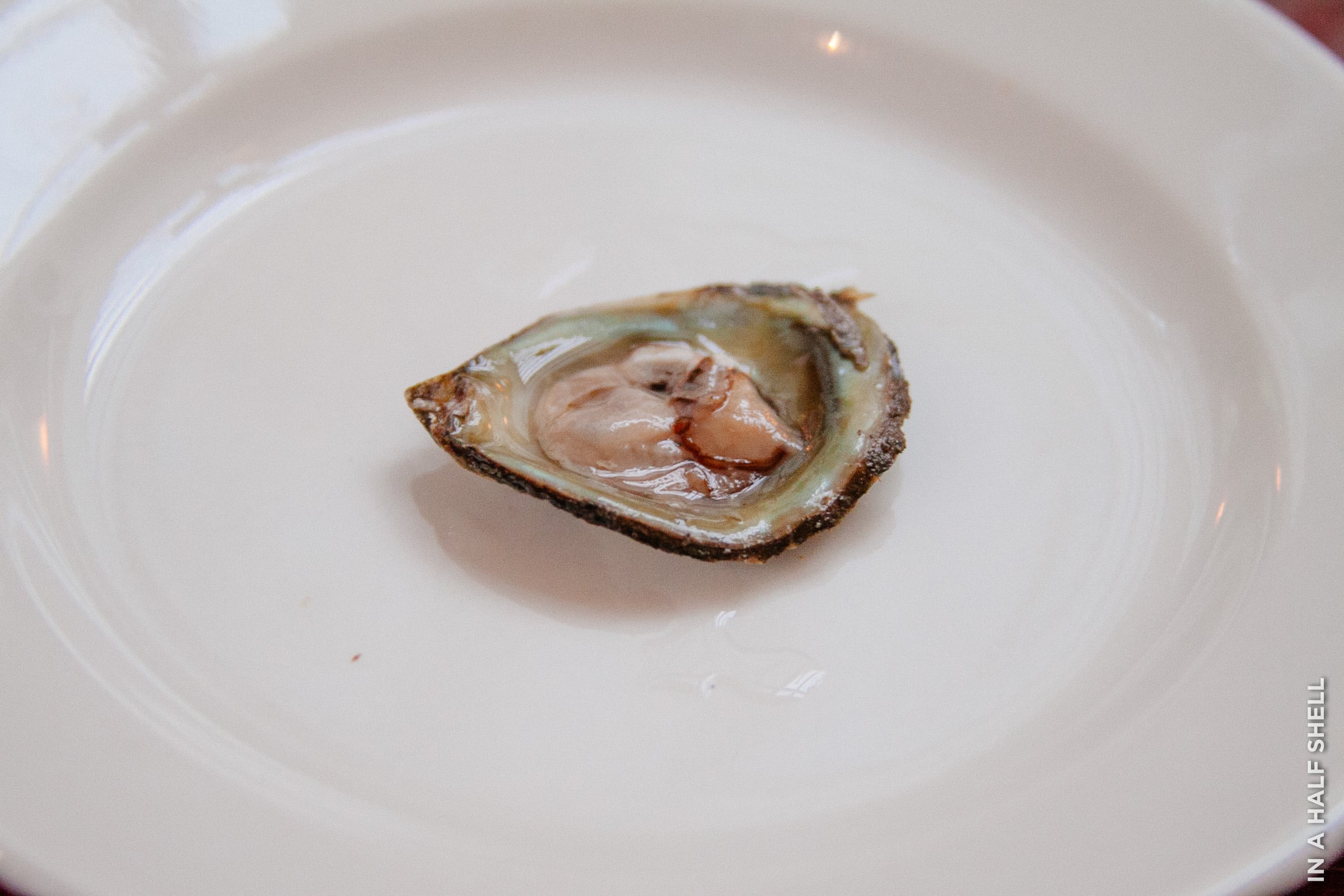New York Oyster Lovers at Essex
Since last fall, I've been charting an exciting edible journey across the world of oysters.
A couple weekends ago, I took my obsession to the next level by attending a series of oyster-devoted events.
It started innocently enough with a second New York Oyster Lovers meet up at Essex Restaurant. Then, a small cluster of us trekked out to the Great South Bay to tour the Blue Island Shellfish Farms with owner Chris Quartuccio. Finally, I attended the NYC Food Film Festival's Great Oyster Shuck 'N Suck party and met my hero, Liza of food.curated. By now, and thanks in part to Liza, most of you are familiar with my oyster log, but wait until you hear what I'm about to do next!
The second-ever NY Oyster Lovers meet up at Essex Restaurant in the LES was a great success. Chef Jason Morey is actually part of the Meet Up, so he helped facilitate this event. The tasting featured three oysters from each coast and also four cooked oyster preparations. A couple of the oysters on the menu were familiar favorites (Kusshi and Beavertail), but the rest were brand new. We also had a wine pairing of a Sauvignon Blanc from the Loire Valley (Pascal Jolivet Sancerre 2008). I was particularly eager to try the hard-to-get Olympia oysters that are native to Washington State.
Raw Oyster Tasting
Fancy Sweet Caraquet from New Brunswick, Canada
The first oyster that I tried was the delicate Fancy Sweet Caraquet from New Brunswick. The size was petite and almost looked a bit bashful or shy. The thin body broke instantly upon chewing and released a slightly salty, yet surprisingly metallic briny flavor.
Kusshi from Deep Bay, British Columbia, Canada
Next up was one of my favorites: the Kusshi from Deep Bay, British Columbia. Just look at it! It's so cute and plump, the beautiful eggshell body is simply decorated with a sweep of black eyeliner. The photo doesn't show you its depth, but this oyster is known to be ultra deep-cupped, due to how it's grown (tumbled silly). The pillowy meat tasted of crisp cucumber and copper. There was a slightly lemon aftertaste, which I didn't pick up from my previous encounter. But then again, anything in the environment (time, water salinity, rainfall, food source, etc.) will affect the flavor.
Hawk’s Point from Willapa Bay, Washington
Another oyster that's new to me was the Hawk's Point from Willapa Bay. As you can tell from the photo, this oyster is of a substantial size. The meat sprawls across the entire length of the shell and tastes surprisingly fresh. The texture of the white meat at the center is the similar to that of jello or custard.
Waweknauk from the Damariscotta, Maine
The Waweknauk also has a large shell, perhaps the biggest of the bunch, but the meat is not even half the size. It's disheveled layers of meat had a pointed saltiness to it which then was complimented by a slightly sweet, lemon aftertaste. It also tasted a bit smoky, like cured ham. Fortunately, the haphazard shucking didn't impact the taste much.
Beavertail from Narragansett Bay, Rhode Island
It really does sort of resemble a beaver's tail! This large (4 inch) and deeply cupped oyster has a bold, briny, buttery flavor.
Olympia from the South Puget Sound, Washington
Saving the most anticipated for last! Unlike other East coast and West coast oysters, this one was of its own species: Ostrea conchaphila. The meat, no bigger than an inch, was packed with a complex flavor profile that was difficult to describe. It was pleasantly briny and tasted almost vegetable-like. However, the moment was so fleeting, that I found myself feeling cheated—caught in a bait and switch situation. Therefore, my current impression of these little Oly's is flat. I need to make it a point to try them again soon.
Prepared Oysters
After the raw tasting, another plate of oysters appeared in front of me. This time, there were four prepared oysters, still in their shells, placed gently on a bed of tangled seaweed. Three of them were roasted and one was pan fried. The chef, a fellow oyster lover, showcased a Blue Point oyster from CT in distinctively different styles, echoing East and West, Traditional and Modern takes.
The first one that I tried was my favorite: a classic New York style oyster that was grilled plainly in its shell, all naked and smooth. I absolutely loved it. The concentrated taste of the sea was baked into every fiber, which was released slowly onto my tongue upon rigorous chewing.
I enjoyed the other preparations as well, but not as much as the true-blue NY Classic. The Asian style featured a bed of fresh grated wasabi and panko, ponzu reduction with minced ginger and lemongrass. Pan-Asia party in my mouth! While "asian" flavors are lovely, there was just too much going on and I was unable to focus on any part of the oyster.
Next, came an oyster done up French style with a tomato concasse and Hollandaise (rich, luxurious), followed by a pan-fried oyster served with a Creole Beurre Blanc and Andouille sausage. Now that was delicious. The Andouille made the flavors of the oyster really pop, like a helpful, yet not overpowering wingman.
While I completely appreciate Chef Morey's effort to showcase the oyster as a truly versatile protein, I admit that I still preferred them in their natural state!

